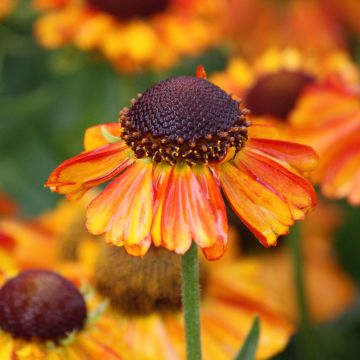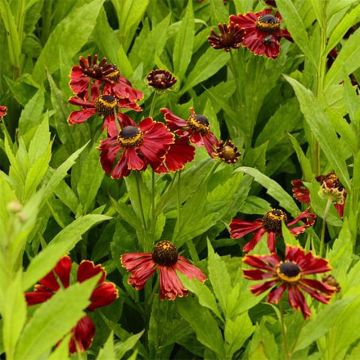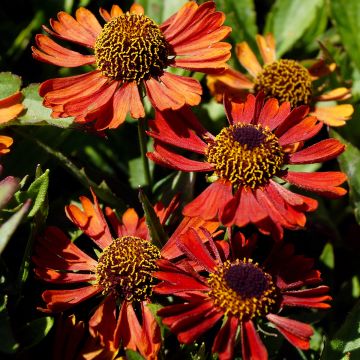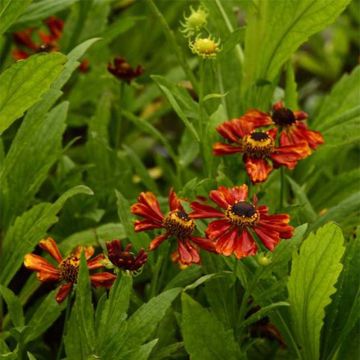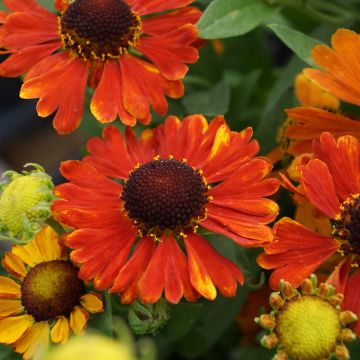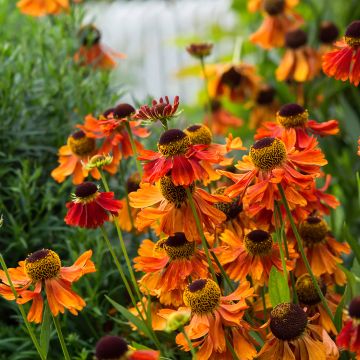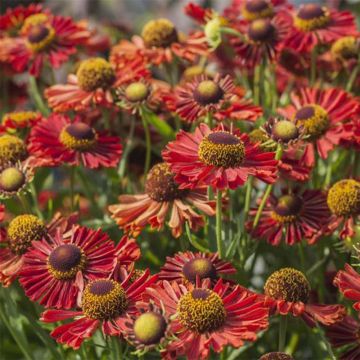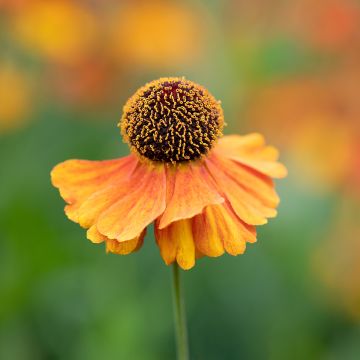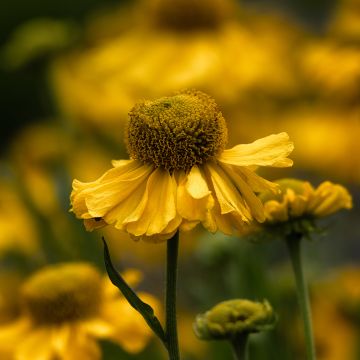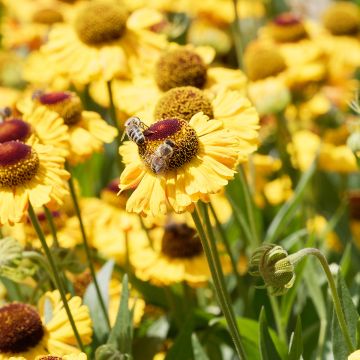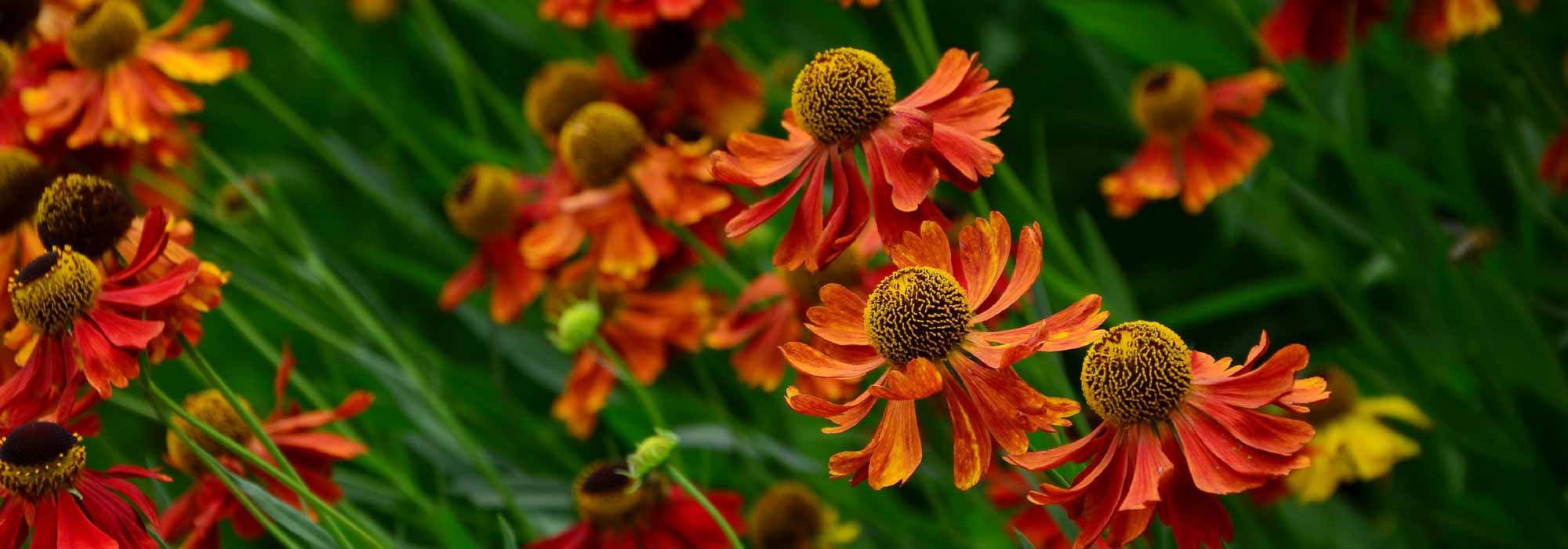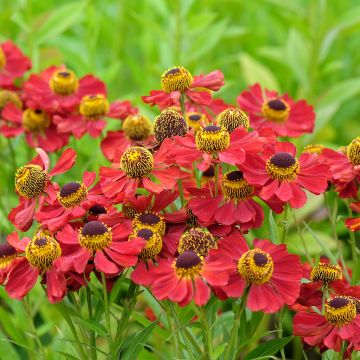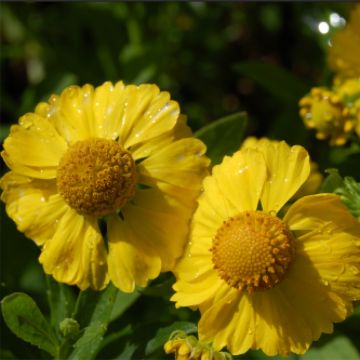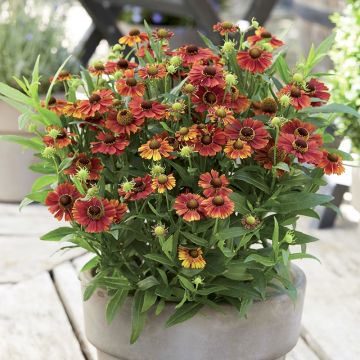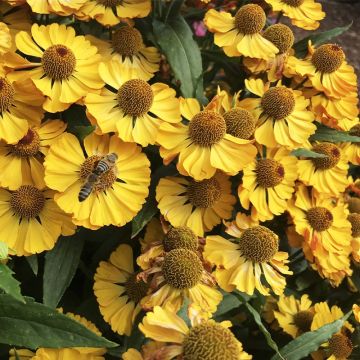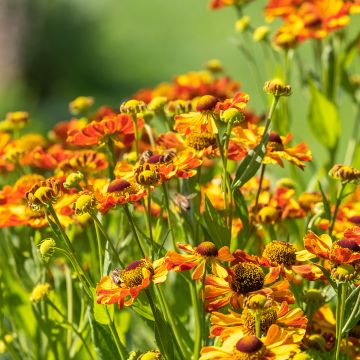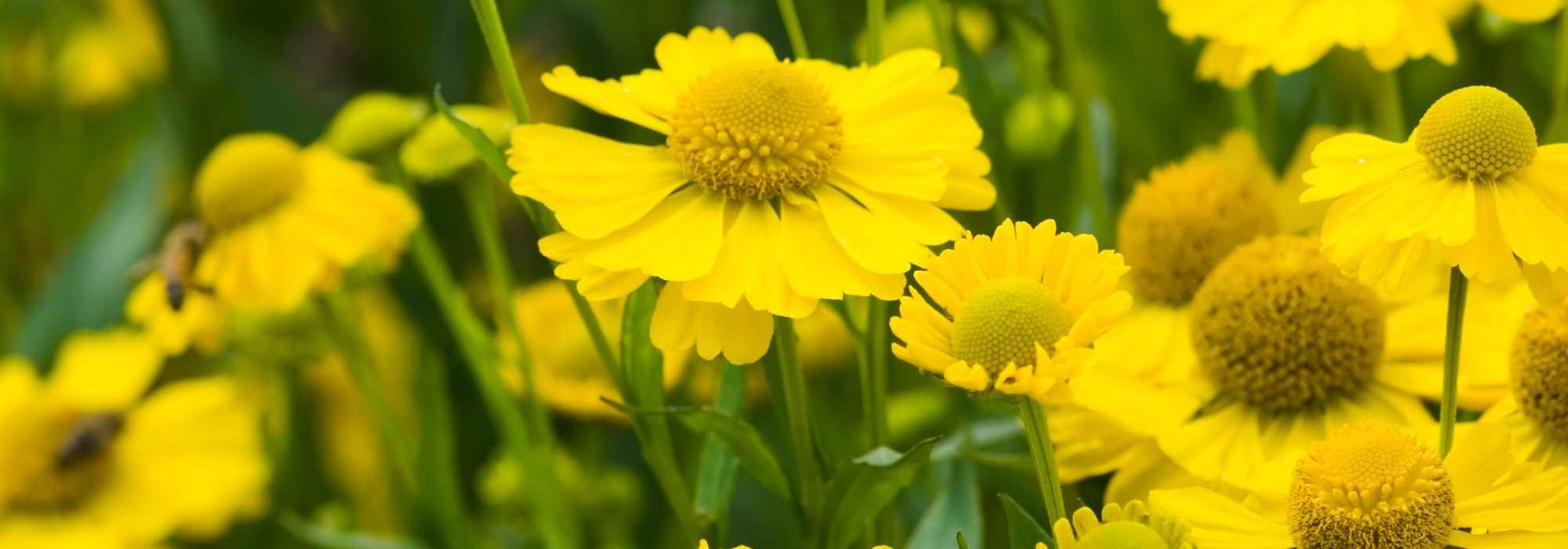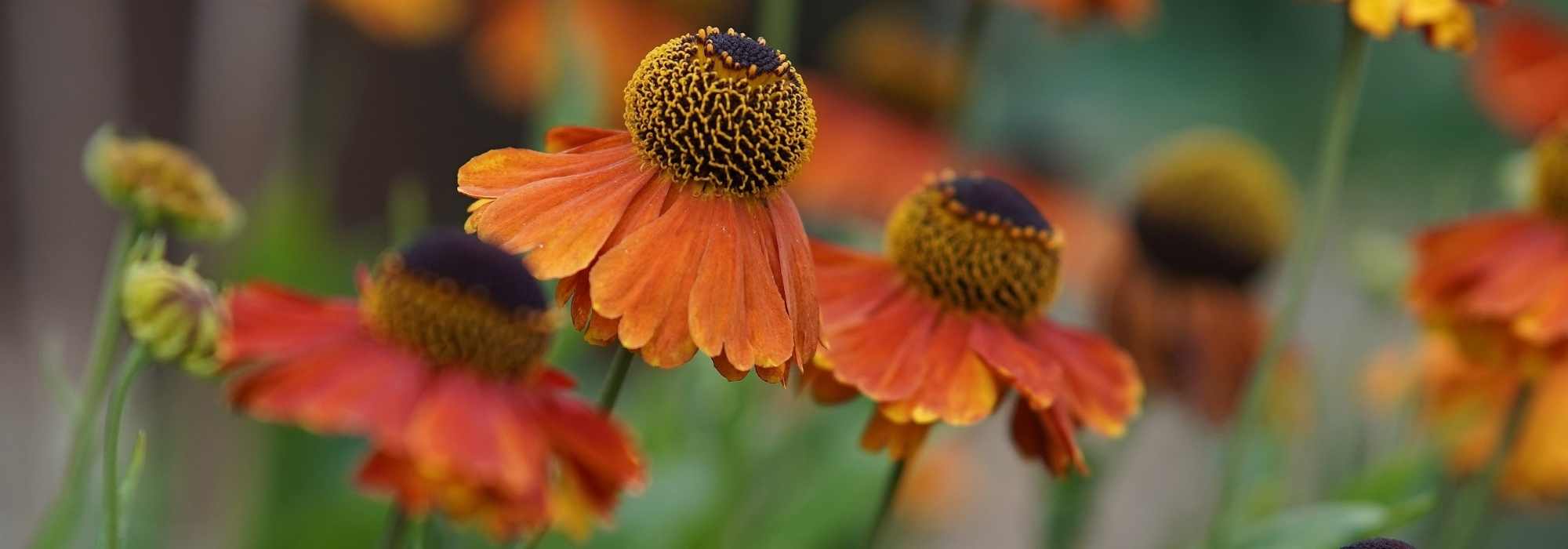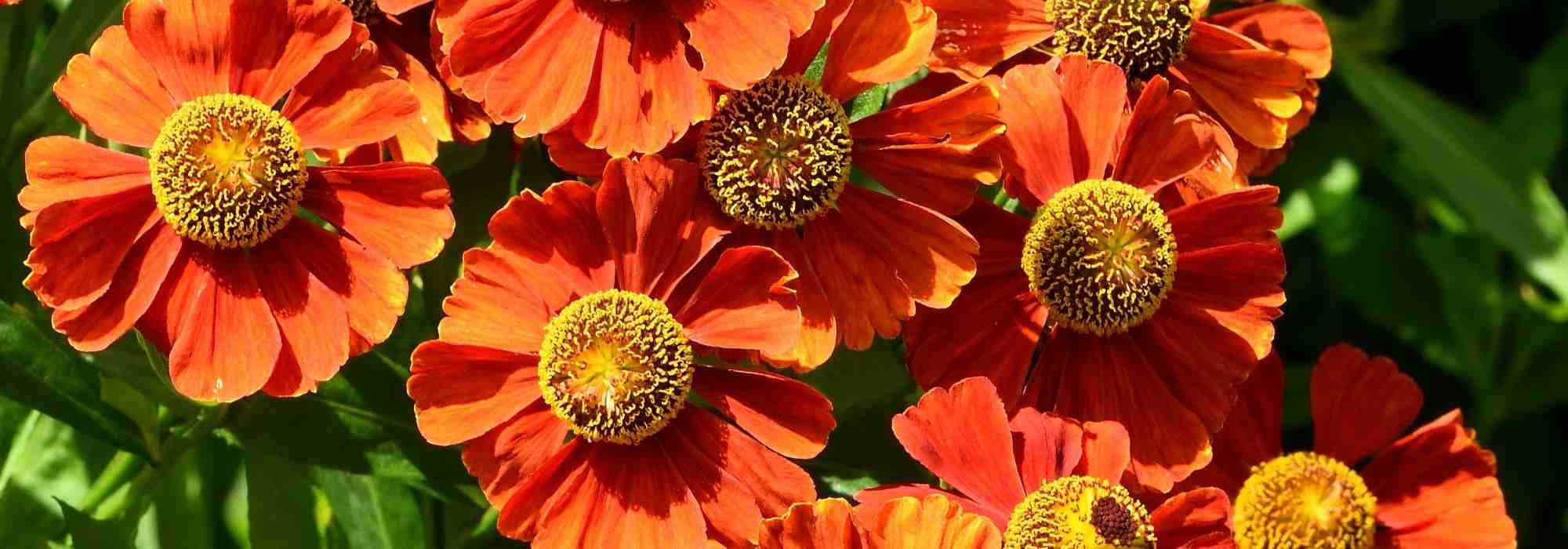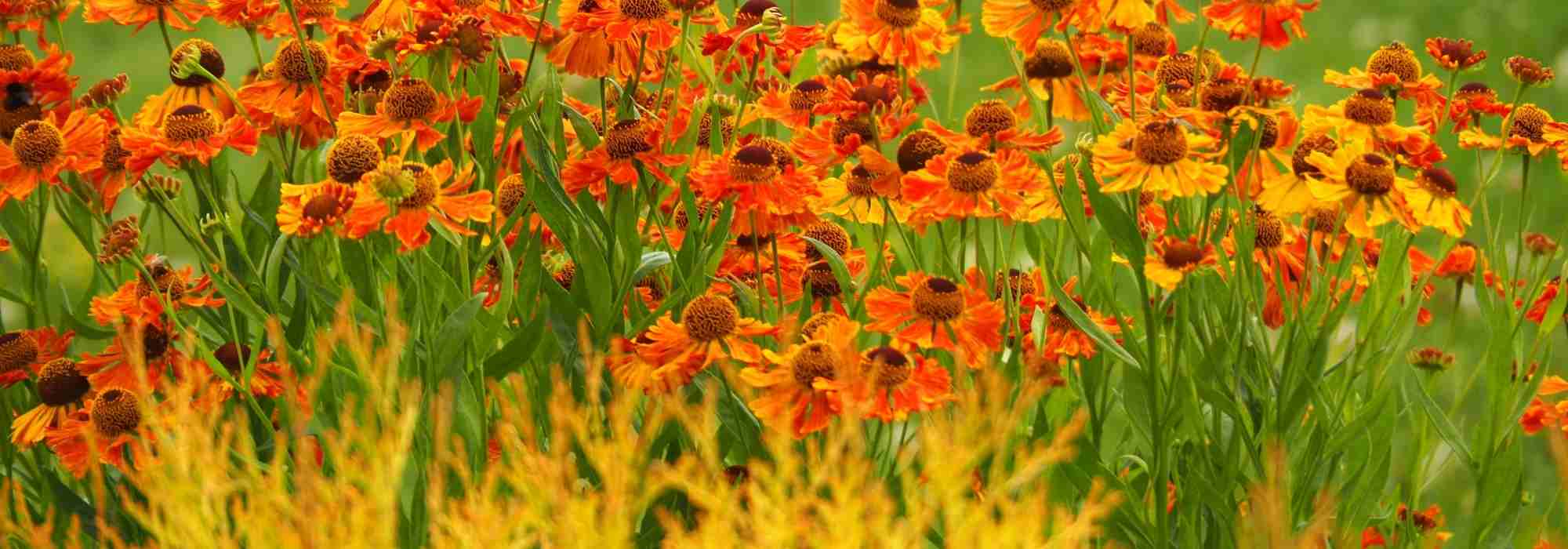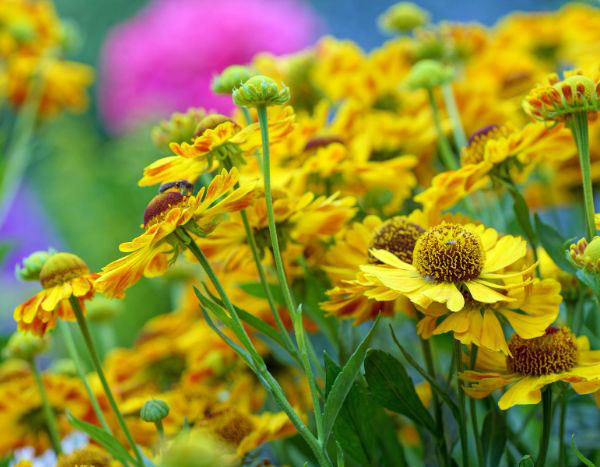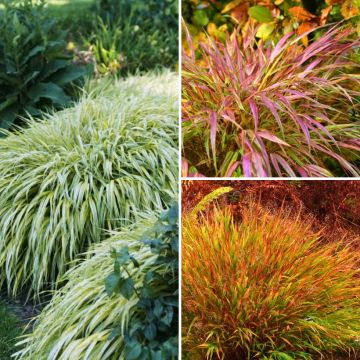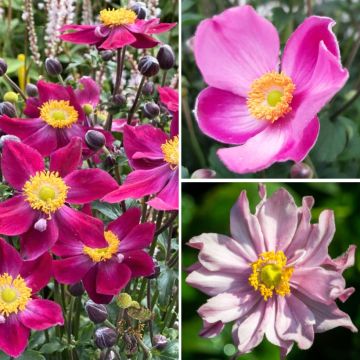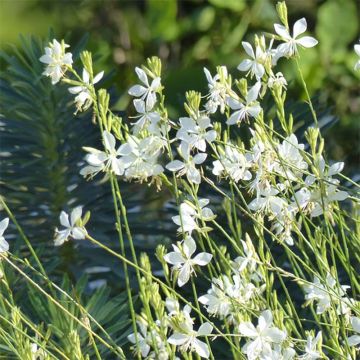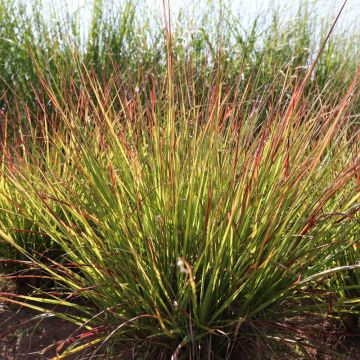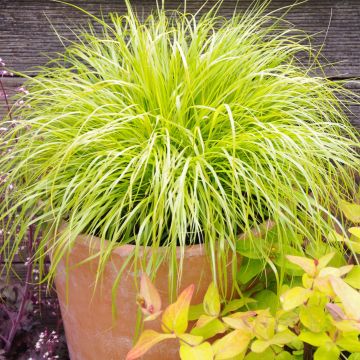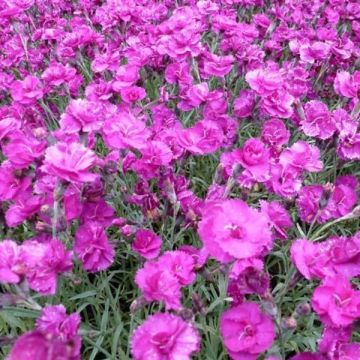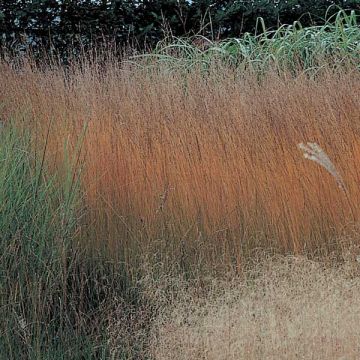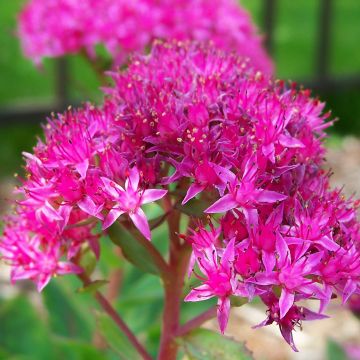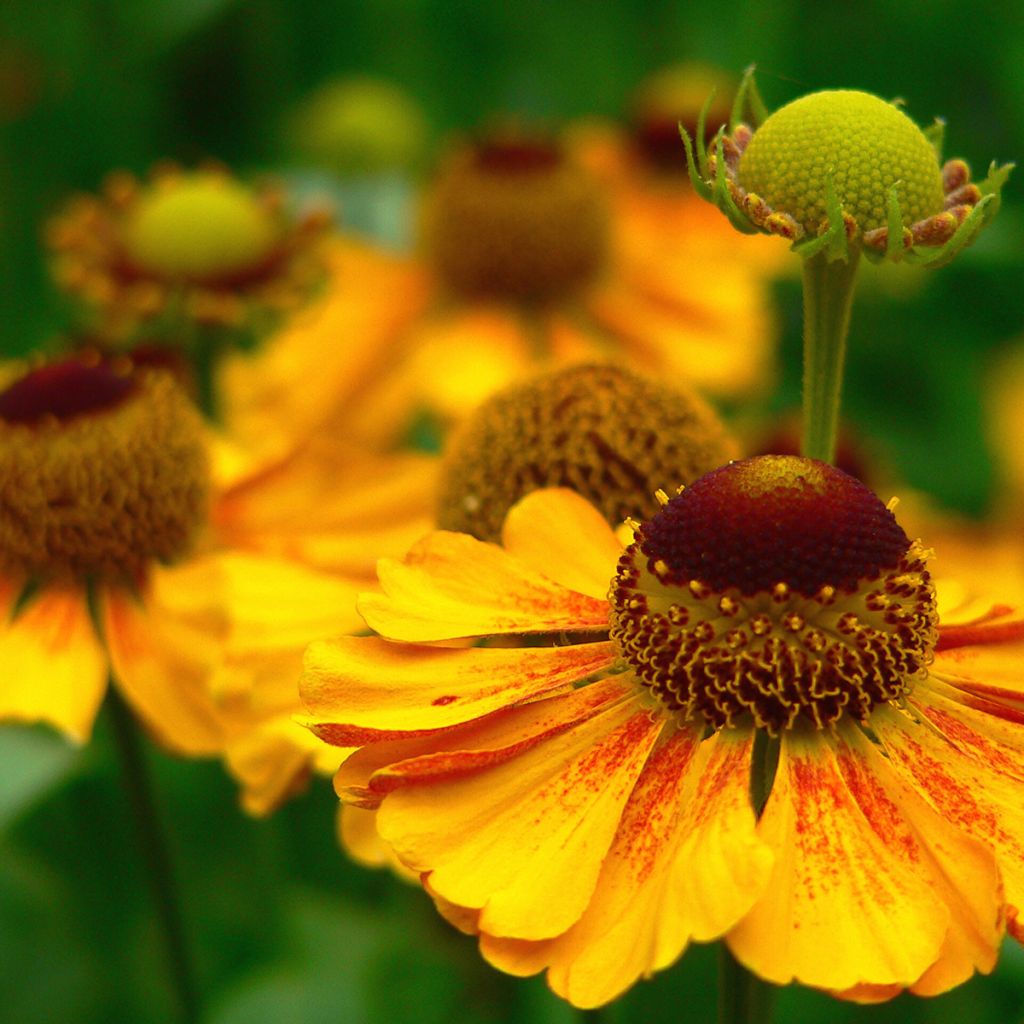

Helenium Zimbelstern
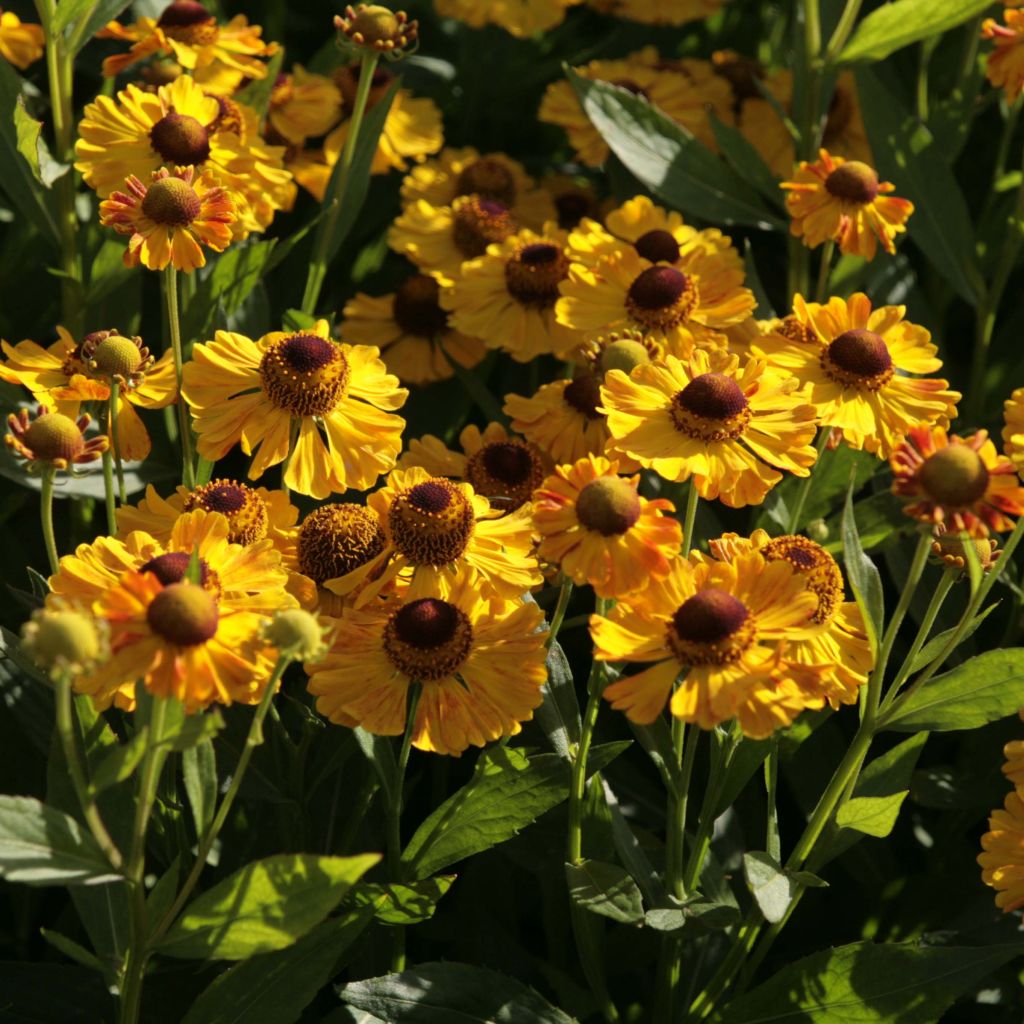

Helenium Zimbelstern
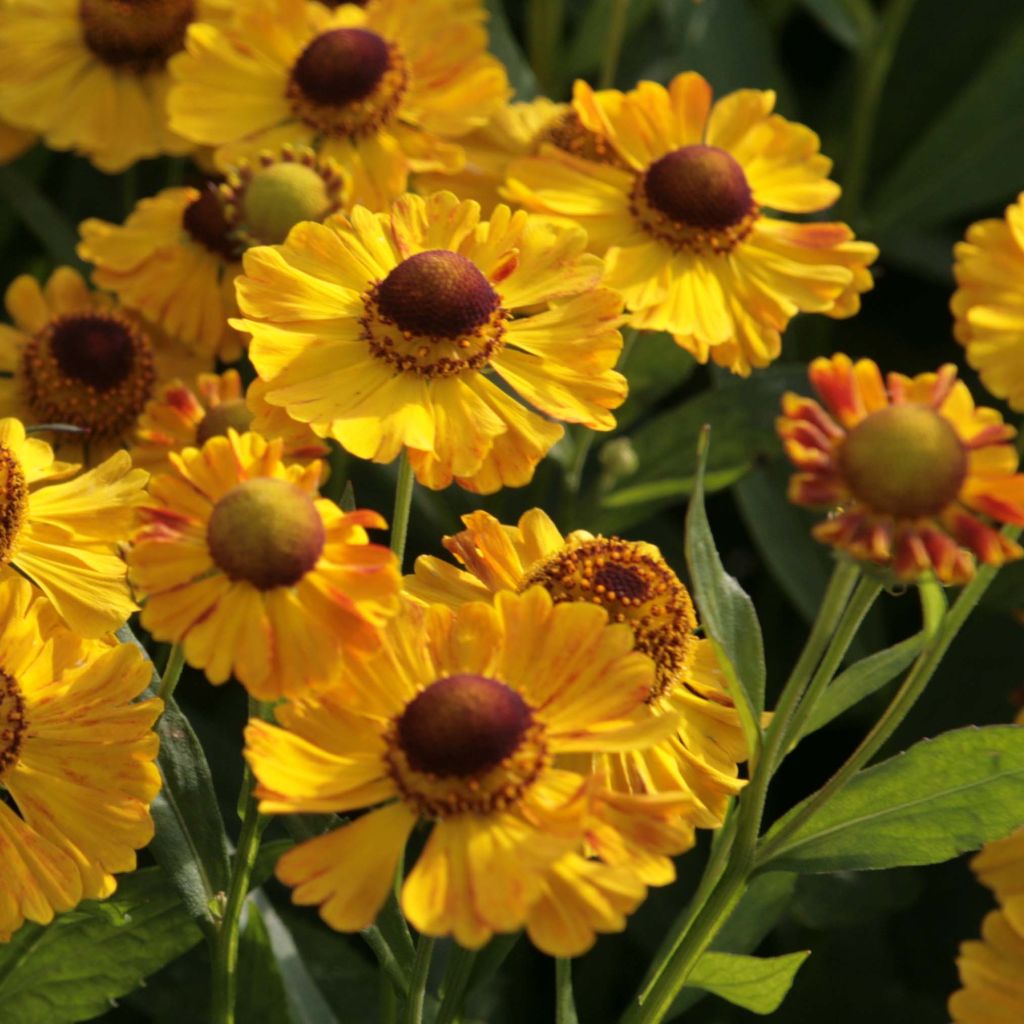

Helenium Zimbelstern
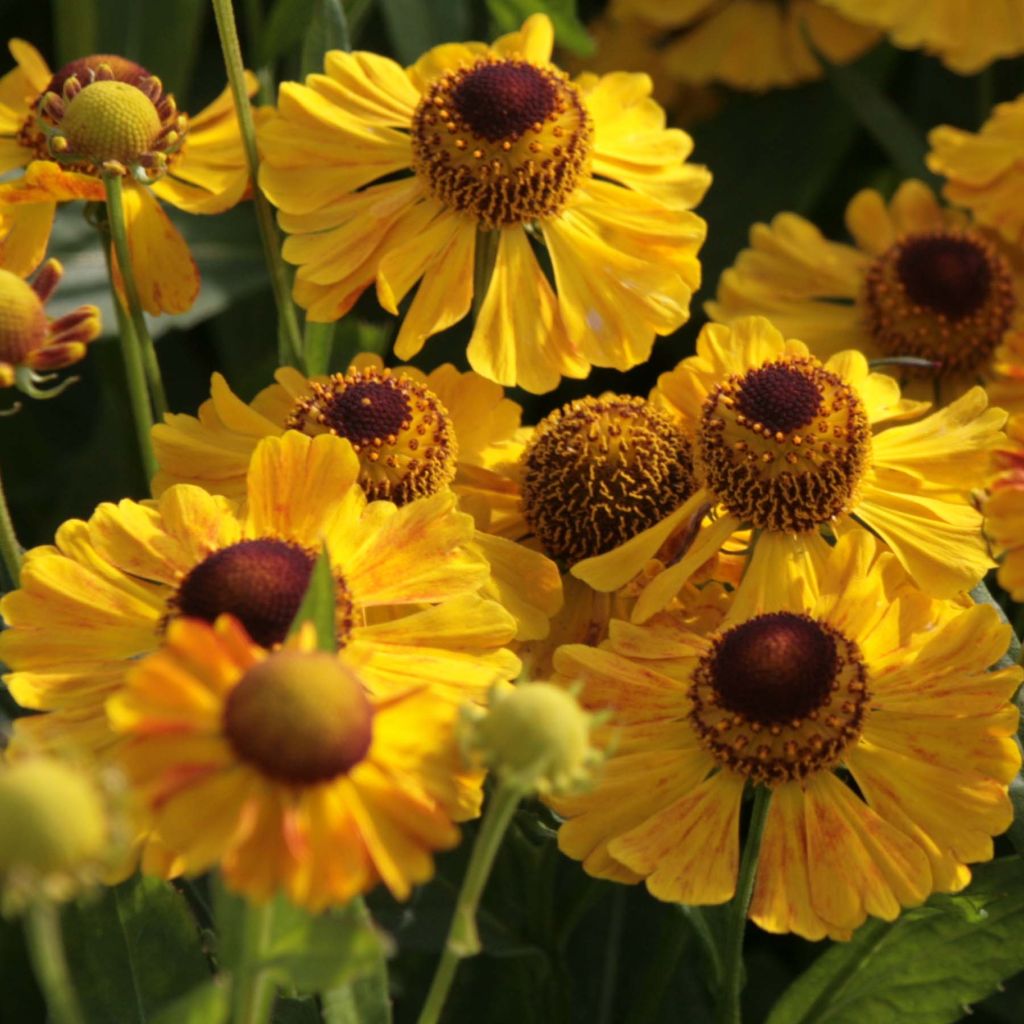

Helenium Zimbelstern
Helenium Zimbelstern
Helenium x automnale Zimbelstern
Sneezeweed, Helen's flower, Dogtooth daisy
As is typical at this time, the young plant is almost devoid of foliage, there is only a clump of roots. I hope it will reappear in the spring, it's too early to be satisfied but they were planted right away and we will keep an eye on them.
Jaime, 29/11/2022
Special offer!
Receive a €20 voucher for any order over €90 (excluding delivery costs, credit notes, and plastic-free options)!
1- Add your favorite plants to your cart.
2- Once you have reached €90, confirm your order (you can even choose the delivery date!).
3- As soon as your order is shipped, you will receive an email containing your voucher code, valid for 3 months (90 days).
Your voucher is unique and can only be used once, for any order with a minimum value of €20, excluding delivery costs.
Can be combined with other current offers, non-divisible and non-refundable.
Why not try an alternative variety in stock?
View all →This plant carries a 12 months recovery warranty
More information
We guarantee the quality of our plants for a full growing cycle, and will replace at our expense any plant that fails to recover under normal climatic and planting conditions.

Does this plant fit my garden?
Set up your Plantfit profile →
Description
Helenium hoopesii 'Zimbelstern', fruit of 20 years of selection in Germany, combines all the qualities expected from this perennial of fresh grounds: a long flowering period, earlier than other varieties, large well-coloured flowers, in honey yellow slightly streaked with orange-red, but above all sturdy stems despite their height exceeding 1m (3ft). Its flowers, loved by butterflies that land on their powder-coated yellow pollen-filled bulging hearts, create warm bouquets and accompany the most beautiful autumn colours in the garden. It is also a very hardy and reliable perennial, easy to grow in the sun, in fresh and well-drained soil.
Heleniums are perennials of the Asteraceae family, native to North America, where they most often grow near marshes. The cultivar 'Zimbelstern', which can be translated as copper star, comes from the species Helenium hoopesii, a perennial with very richly coloured flowers and vigorous vegetation. 'Zimbelstern' is a large, active and very floriferous variety. It has a bushy habit, with branched stems reaching a height of 1 to 1.20m (3 to 4ft). From August to October, a large number of heads endlessly open at the top of the stems. These inflorescences resemble large 7cm (3in) diameter daisies. In the centre, the shiny cone, coloured brown, gradually gives way to yellow stamens. At the periphery, florets of amber yellow more or less touched with red-orange fade, taking on a more coppery hue in perfect harmony.
The 'Zimbelstern' Helenium is a robust plant, very hardy and never sick. It appreciates ordinary soils that remain fresh and sunny exposures. Easy to grow, it flowers equally well on slopes, in flower beds, and in pots on the terrace. Despite all these qualities, Heleniums remain rare in gardens. Perhaps because their warm tones announce autumn a little too quickly, while the garden and the gardener are still trying to hold onto the last summer blooms; they are, however, the ideal complement to asters. 'Zimbelstern', in combination with Rudbeckias or Echinaceas, goes very well with autumnal plants such as grasses and sunflowers, but it can also be associated with a deciduous spindle tree, whose foliage ignites at the first cold, or with the sumptuous dyer's vine. In a different setting, the velvety foliage of Stachys, the blue-violet spikes of salvias or Perovskia greatly enhance the warm hue of this flowering. One can also let pretty bushy clematis run among the clumps of Heleniums, such as Clematis heracleifolia for example. Its feathery silver fruits are magnificent at the end of the season.
Helenium Zimbelstern in pictures
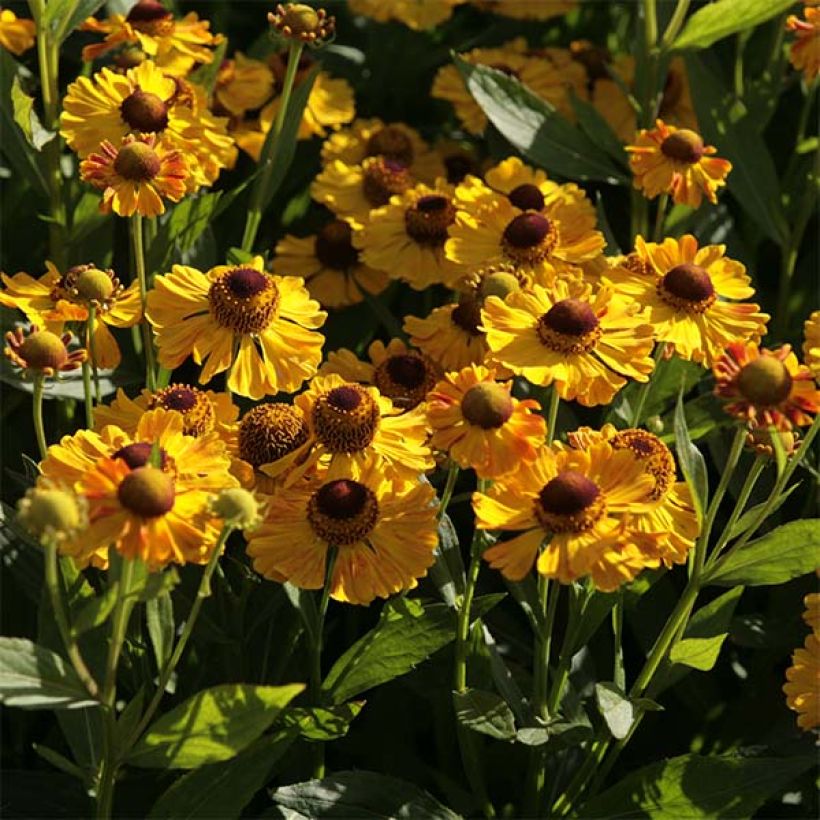

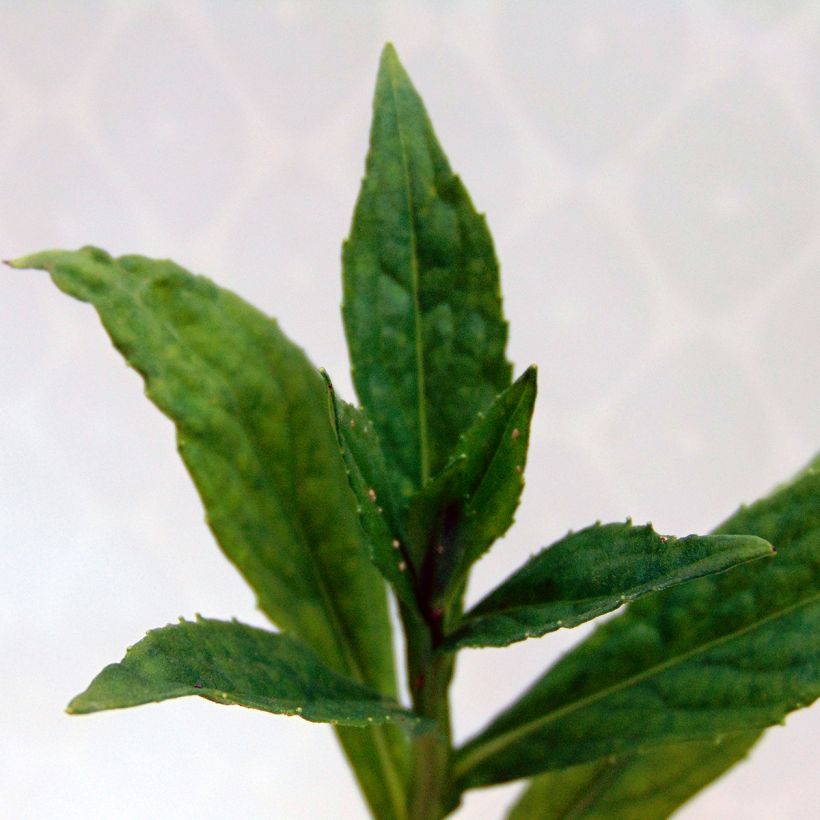

Flowering
Foliage
Plant habit
Botanical data
Helenium
x automnale
Zimbelstern
Asteraceae
Sneezeweed, Helen's flower, Dogtooth daisy
Cultivar or hybrid
Other Helenium
View all →Planting and care
Plant Helenium 'Zimbelstern' in spring or autumn, in ordinary soil as long as it is well-drained and remains moist, by adding planting soil and/or well-rotted compost. Choose a sunny exposure for it. Water regularly after planting, then once established, only water in case of prolonged drought. This variety does not require staking, but a windy exposure may tend to flatten the clumps. Cut back the plant once the stems have turned black. Every 2 to 3 years, you can divide the clump in spring or autumn to multiply or regenerate the plant and give it renewed vigour. This plant has few known enemies, diseases or pests.
Planting period
Intended location
Care
Planting & care advice
-
, onOrder confirmed
Reply from on Promesse de fleurs
Similar products
Haven't found what you were looking for?
Hardiness is the lowest winter temperature a plant can endure without suffering serious damage or even dying. However, hardiness is affected by location (a sheltered area, such as a patio), protection (winter cover) and soil type (hardiness is improved by well-drained soil).

Photo Sharing Terms & Conditions
In order to encourage gardeners to interact and share their experiences, Promesse de fleurs offers various media enabling content to be uploaded onto its Site - in particular via the ‘Photo sharing’ module.
The User agrees to refrain from:
- Posting any content that is illegal, prejudicial, insulting, racist, inciteful to hatred, revisionist, contrary to public decency, that infringes on privacy or on the privacy rights of third parties, in particular the publicity rights of persons and goods, intellectual property rights, or the right to privacy.
- Submitting content on behalf of a third party;
- Impersonate the identity of a third party and/or publish any personal information about a third party;
In general, the User undertakes to refrain from any unethical behaviour.
All Content (in particular text, comments, files, images, photos, videos, creative works, etc.), which may be subject to property or intellectual property rights, image or other private rights, shall remain the property of the User, subject to the limited rights granted by the terms of the licence granted by Promesse de fleurs as stated below. Users are at liberty to publish or not to publish such Content on the Site, notably via the ‘Photo Sharing’ facility, and accept that this Content shall be made public and freely accessible, notably on the Internet.
Users further acknowledge, undertake to have ,and guarantee that they hold all necessary rights and permissions to publish such material on the Site, in particular with regard to the legislation in force pertaining to any privacy, property, intellectual property, image, or contractual rights, or rights of any other nature. By publishing such Content on the Site, Users acknowledge accepting full liability as publishers of the Content within the meaning of the law, and grant Promesse de fleurs, free of charge, an inclusive, worldwide licence for the said Content for the entire duration of its publication, including all reproduction, representation, up/downloading, displaying, performing, transmission, and storage rights.
Users also grant permission for their name to be linked to the Content and accept that this link may not always be made available.
By engaging in posting material, Users consent to their Content becoming automatically accessible on the Internet, in particular on other sites and/or blogs and/or web pages of the Promesse de fleurs site, including in particular social pages and the Promesse de fleurs catalogue.
Users may secure the removal of entrusted content free of charge by issuing a simple request via our contact form.
The flowering period indicated on our website applies to countries and regions located in USDA zone 8 (France, the United Kingdom, Ireland, the Netherlands, etc.)
It will vary according to where you live:
- In zones 9 to 10 (Italy, Spain, Greece, etc.), flowering will occur about 2 to 4 weeks earlier.
- In zones 6 to 7 (Germany, Poland, Slovenia, and lower mountainous regions), flowering will be delayed by 2 to 3 weeks.
- In zone 5 (Central Europe, Scandinavia), blooming will be delayed by 3 to 5 weeks.
In temperate climates, pruning of spring-flowering shrubs (forsythia, spireas, etc.) should be done just after flowering.
Pruning of summer-flowering shrubs (Indian Lilac, Perovskia, etc.) can be done in winter or spring.
In cold regions as well as with frost-sensitive plants, avoid pruning too early when severe frosts may still occur.
The planting period indicated on our website applies to countries and regions located in USDA zone 8 (France, United Kingdom, Ireland, Netherlands).
It will vary according to where you live:
- In Mediterranean zones (Marseille, Madrid, Milan, etc.), autumn and winter are the best planting periods.
- In continental zones (Strasbourg, Munich, Vienna, etc.), delay planting by 2 to 3 weeks in spring and bring it forward by 2 to 4 weeks in autumn.
- In mountainous regions (the Alps, Pyrenees, Carpathians, etc.), it is best to plant in late spring (May-June) or late summer (August-September).
The harvesting period indicated on our website applies to countries and regions in USDA zone 8 (France, England, Ireland, the Netherlands).
In colder areas (Scandinavia, Poland, Austria...) fruit and vegetable harvests are likely to be delayed by 3-4 weeks.
In warmer areas (Italy, Spain, Greece, etc.), harvesting will probably take place earlier, depending on weather conditions.
The sowing periods indicated on our website apply to countries and regions within USDA Zone 8 (France, UK, Ireland, Netherlands).
In colder areas (Scandinavia, Poland, Austria...), delay any outdoor sowing by 3-4 weeks, or sow under glass.
In warmer climes (Italy, Spain, Greece, etc.), bring outdoor sowing forward by a few weeks.






























